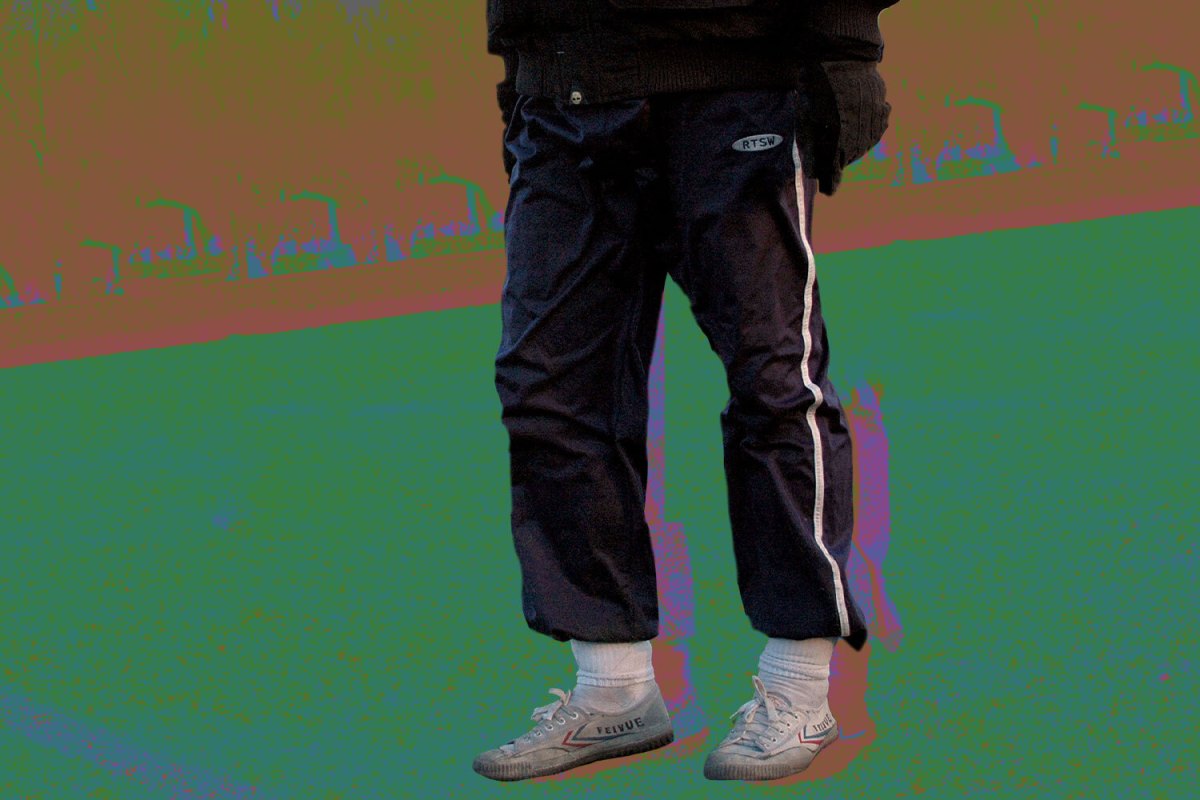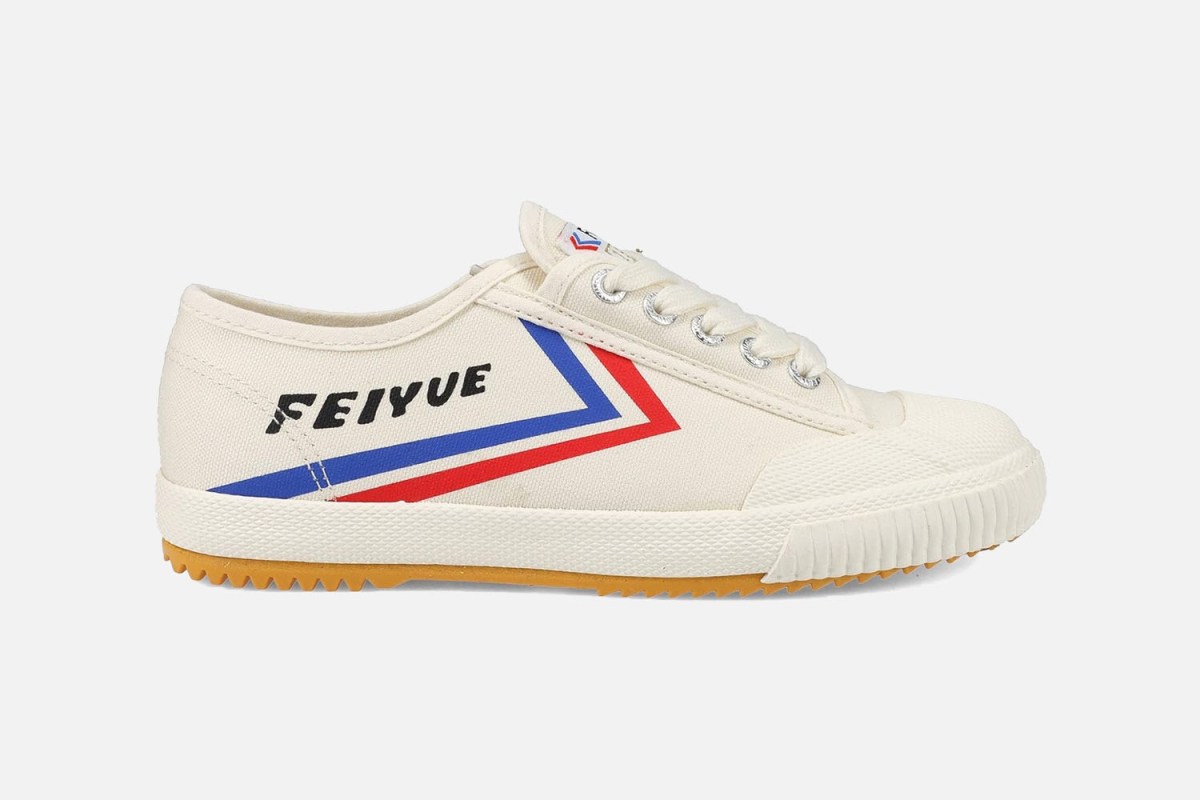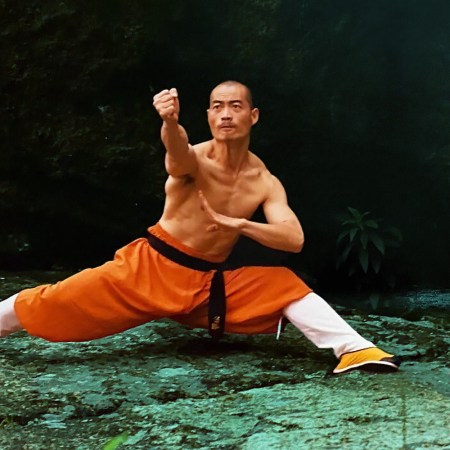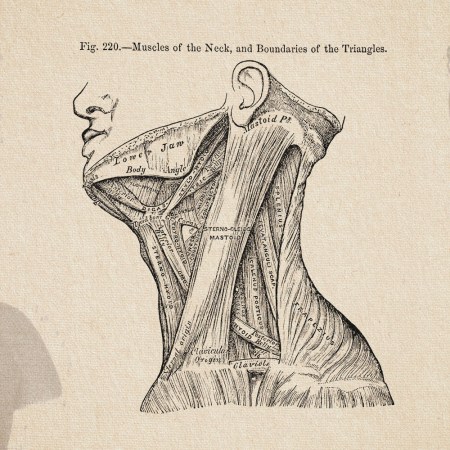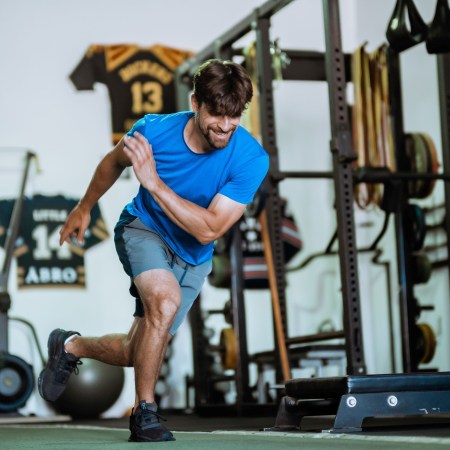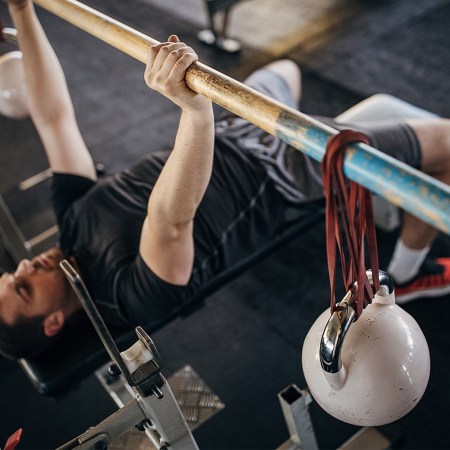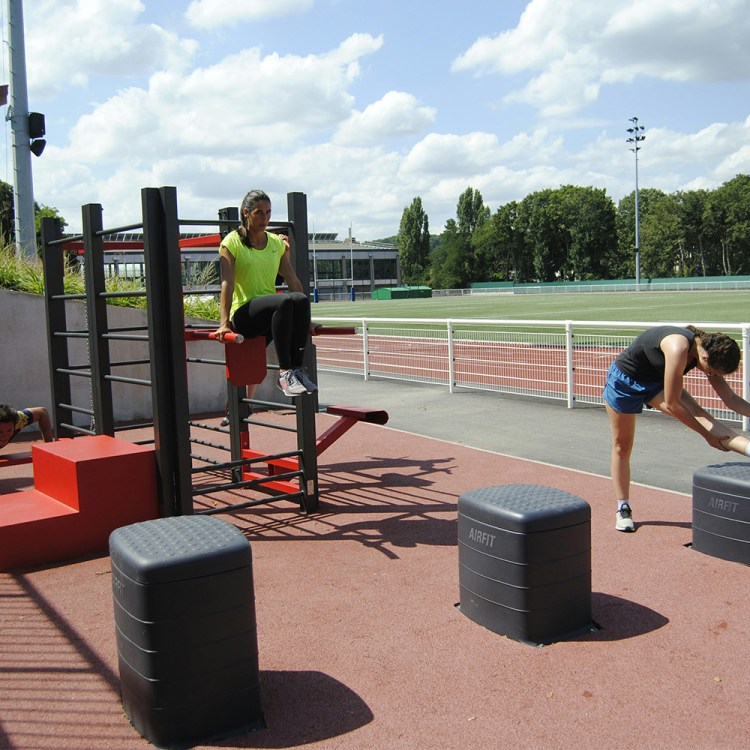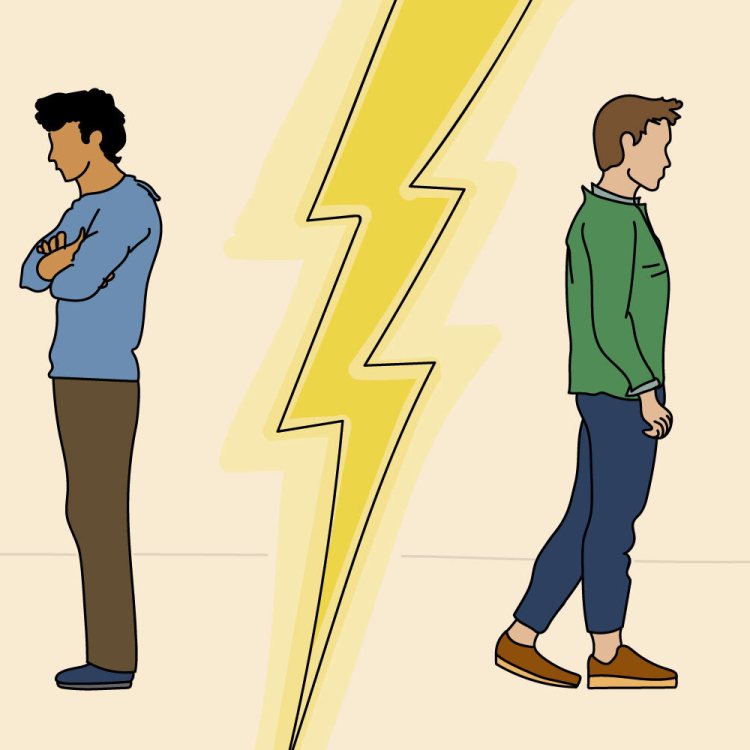There’s a line at the end of The Shawshank Redemption that is pretty integral to Andy Dufresne’s escape from prison. He’s nicked the warden’s mirror-polished dress shoes, hoping to look the part when he heads to the bank on the outside. None of the prison guards notice as Andy stomps right past them, wearing the sleek new pair. Morgan Freeman intones as narrator: “I mean, seriously, how often do you really look at a man’s shoes?”
With all due respect to one of the better characters in film history: literally all the time. I always look at another man’s shoes. At work or on the subway, sure, but especially while exercising. As a wellness writer who’s plugged in to such things, I love to see what sneakers athletes are wearing to the track, basketball court, soccer pitch or gym. During my marathon last fall, I distracted myself on the punishing bridges by trying to pick out running shoes from the pack in front of me.
Lately, I keep noticing a specific shoe on my local weight room floor: the Feiyue Fe Lo 1920 Canvas Sneaker. Once a week I’ll spot the sneaker (usually in white) while I should probably be focusing on the form of my bent-over rows. Why is the shoe suddenly so popular? Where does it even come from? I decided to find out.
Feiyue’s Kung Fu Origins
Feiyue’s history is somewhat murky: its Shanghai parent corporation, Da Fu Rubber Company, started producing the shoe in the 1950s, choosing the name “feiyue,” which means “to leap.” In 1958, Mao Zedong debuted a new five-year plan for Communist China, called the Great Leap Forward. It’s hard to imagine that the shoe’s name wasn’t a nod to the state.
That said, the shoe was also the latest in a local lineage of canvas low-tops, favored for decades by Shaolin warrior monks and kung fu trainees. Rubber and canvas were a dream duo at the time. The former was plentiful (Chinese tire companies had it in excess) and the latter was lightweight and comfortable, surprisingly suitable for performance. American athletes were wearing rubber-canvas sneaks by the second half of the 20th century, too. See: Wilt in Chucks.
Feiyue retained its popularity for a while — there are some awesome images out there of monks wearing the kicks — and added some key touches along the way (like its now iconic red and blue chevrons), leading to millions of yearly sales in the 1980s. By the end of the century, though, with new competition from international brands, Feiyue’s presence in China faded away.
It took Western interest for Feiyue to get going again. A Frenchman named Patrice Bastian revived the brand for European customers (separately from Da Fu Rubber) in the mid-aughts, eventually establishing an American presence, too. The “Feiyue Shoe Collection” featured a more robust sole, for the sort of general wear that won casual fans like Orlando Bloom. (Seen here sporting Feiyues while crushing Dostoevsky. The peak male form.)
Why People Love Them
Unsurprisingly, Shanghai wasn’t particularly excited that a Franco-American team bargain-binned a once proud Chinese brand. Feiyue production was back up again in earnest in China by the 2010s. You used to be able to tell the difference between a Western Feiyue and a Chinese Feiyue by the mark on the sole (a red circle for the Western, a green triangle for the Chinese), but now China’s started slapping a red circle onto their soles as well.
Confused? It gets even more confusing if you dive into the labyrinth of international copyright lawsuits that have dogged this low-top sneaker for decades now. But your time is too precious to be spent on that.
All you need to know is that this shoe is a survivor. It’s lasted this long — and been produced across all sorts of seas — because it’s good at its singular job: helping people train. That training could be martial arts, or parkour, or in my case, the much less exciting weightlifting. People love the shoe because its core construction is still all you really need.
Feiyue blends a grippy, wide-set base, with padded insoles and a reinforced toe cap. That’s pretty much it. Lifters favor them because it allows your toes to spread out and “grip” the ground. (Remember, you don’t want to be strength-training in running shoes! That’s like squatting on a bedroom pillow.) Plus, the canvas is super flexible, accommodating twists and turns as they arrive. Probably the best thing about Feiyues, though? They’re just $35. Grab a pair below.
Whether you’re looking to get into shape, or just get out of a funk, The Charge has got you covered. Sign up for our new wellness newsletter today.
